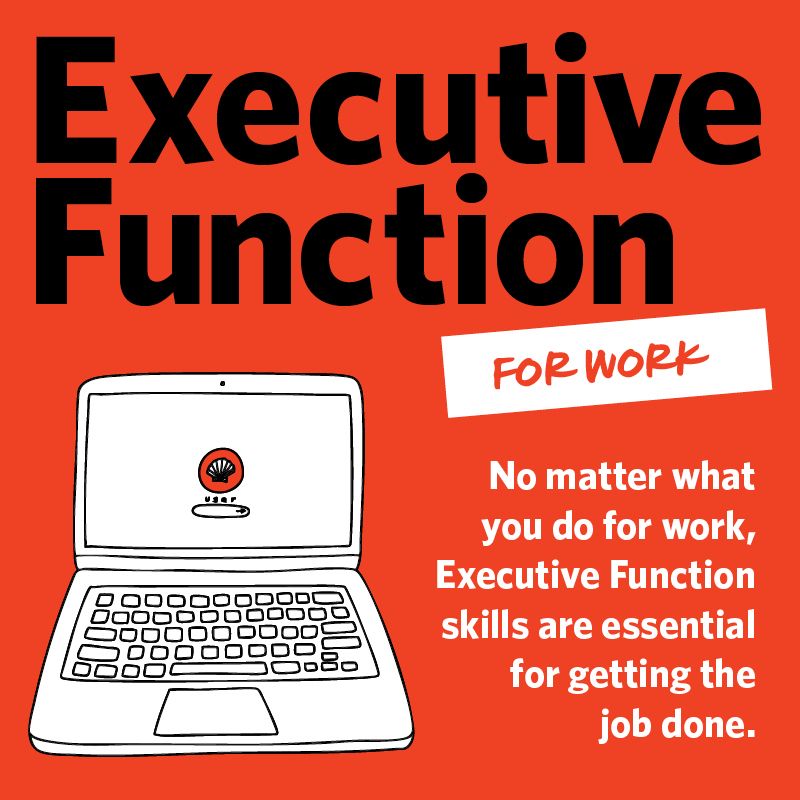- Our School
- Our Advantage
- Admission
- Elementary•Middle School
- High School
- Summer
- Giving
- Parent Resources
- For Educators
- Alumni
« Back
Executive Function For Work
May 22nd, 2025
Part 4 of Executive Function: A Guidebook

Ronaldo works at a tech start-up. He’s a brilliant coder, has excellent people skills, and is passionate about the software his company sells. But he sometimes arrives late to meetings, misses deadlines, and struggles to organize the resources he needs to get his job done. Renaldo has clear executive function (EF) deficits at work—and they show up at home, too.
Know Your Rights
Executive function is not a diagnosed disability, so while people may struggle with this at work, employers are not required to provide accommodations for those struggling with time management, prioritization, motivation, and more. However, many employers are willing to provide reasonable accommodations even if there is no disability diagnosis, especially if it is something that will benefit several employees. Many employers agree that accommodations provided for one employee often benefit many.

Workplace Accommodations
Here is a list of possible workplace accommodations. A larger list is available on the Understood.org website.14
- Written instructions with short, clear steps.
- Pictures, photos, or videos that show how to do an important task.
- Text-to-speech tools if needed for emails and texts.
- Visual reminders posted in physical and virtual workstations.
- Checklists to help structure the steps in a given task.
- Daily or weekly huddles to ensure that each team member is aligned and focused on goals.
- Written agendas shared before a meeting or conversation.
- Mentors and/or job coaches to support interactions or to help teach new tasks.
- Ergonomic workstations, including the flexibility to sit or stand as needed.
- Flexible break times.
- Clear goals and metrics, including examples of how to achieve them.
- Tasks broken down into smaller steps.
- Visual demonstration of how to start a task and what it should look like at the end.
- Daily schedules and/or ideas on how to structure work time to be more productive.
Self Awareness and Communication
Understanding how you think and learn, called metacognition (pg. 31), is vital to making change. If you are asking your employer for workplace accommodations, it’s imperative that you know what support you need to be effective.
Model Behavior
There’s always that person at work who seems to be on top of everything. Observing the routines and practices of colleagues can be a great way of developing skills and strategies that may be useful to you and your EF skills.
The Power of Teamwork
If there are specific things that challenge you, e.g. time management, talk to a trusted colleague about this. You should feel comfortable owning your weaknesses and asking for help. Peers at work are often eager to share strategies that work for them and you likely have some tips that your colleagues can benefit from, too.

Self Esteem
Even though researchers note that EF solidifies in the human brain in our mid-twenties, it doesn’t mean that adults cannot learn strategies to address their EF deficits. A recent article from the renowned Mayo Clinic15 offers some advice, including being aware of situations in which your self-esteem may be challenged. For example, making a presentation to colleagues could be difficult and intimidating, and it’s important to recognize that. Are the beliefs you have about yourself and your performance true? For those who suffer from low self-esteem, negative thoughts often become exaggerated.
If you notice that you frequently convert positive emotions into negative ones, address this and try to raise your awareness of this habit. Here are some key tips for maintaining positive self-esteem.
- Focus on your strengths and lean into these to help counteract your negativity.
- Spend time with people who make you feel good about yourself.
- Try to do something you enjoy every day.
- Take care of yourself by eating a healthy diet, getting seven to eight hours of sleep each night, and exercising 30 minutes each day. 15

Tips from Landmark Alumni
We’ve polled some Landmark alumni to share favorite executive function tips they practice at work.

Spencer Smitherman ’08
Head of Customer Success, Sublime Security
Use AI to Summarize Call Notes
I use ChatGPT or Claude to summarize a meeting transcript generated from call recording software like Gong. It helps augment any notes I take during the meeting.
Minimize Distractions
I disable most notifications on my phone to reduce distractions.
Prep the Night Before
I generate meeting agendas on Sunday before my week starts. It makes back-to-back meetings much less stressful. Use Visual Tools Kanban-style trackers to organize tasks and make them visual in project management software, like Notion or Asana, are super helpful when juggling simultaneous tasks.
Simon English ’14
Co-Founder, Common Table Creative
As a filmmaker running my own production company, Common Table Creative, I face a myriad of short and long-term tasks. Executive functioning is the backbone of my operation. The two essential strategies I use are the Pomodoro technique and maintaining micro and macro checklists.
Pomodoro Technique
With the Pomodoro technique, I work intensely for 25 to 35 minutes, then take a quick 3 to 5-minute break. This helps me stay on task but also lets me reset periodically to keep my eyes and mind fresh and to avoid burnout.
Macro and Micro Checklists
The macro checklist is what I need to get done in the next month or two. My micro list is my day-to-day tasks. These strategies help me stay focused, achieve my goals, and hit deadlines. If you want to explore higher-tech options, here’s a link to a website with some top-rated digital project management tools.


Ady Tibrewal ’17
Assistant Project Manager, EDA Contractors Digital Calendar Management
With numerous meetings, site visits, and calls every day, I use my online calendar to schedule appointments and even block out time for independent tasks that require focus.
Mini Whiteboards or Post-It Notes
With my ADHD, I find it difficult to hold too many details in my head, so I make a habit of writing things down or recording notes as soon as I hear them. Each mini whiteboard is dedicated to a specific project where I track tasks and action items. It’s simple but incredibly effective!
Communication
Constant communication with colleagues ensures that we’re aligned on completing tasks. If something slips through the cracks, my team helps keep me on track.
File and Flag Emails
Managing hundreds of emails every day can be overwhelming. I organize them by project and further categorize them based on topics. This helps me access information later and focus on the most urgent tasks.
Citations
14. Understood. (n.d.). Reasonable workplace accommodation examples. Retrieved November 21, 2024
15. Mayo Clinic Staff. (n.d.). Self-esteem: Take steps to feel better about yourself. Retrieved November 21, 2024
The Executive Function Guidebook was compiled by representatives from Landmark School, empowering students with reading challenges, and Landmark Outreach, PD and coaching for educators.
Executive Function: A Guidebook Blog Series
Click on each of the images below to see that blog article. Or download the entire guidebook using the form.
Download Executive Function: A Guidebook
Executive Function Guidebook
Fill out the form to see the Executive Function Guidebook as a flipbook or download the entire guidebook.


Dyslexia: A Guidebook
Check out Landmark's other Guidebook blog series on Dyslexia.

Reading: A Guidebook
Check out Landmark's other Guidebook blog series on Reading.
Posted in the category Learning.

























